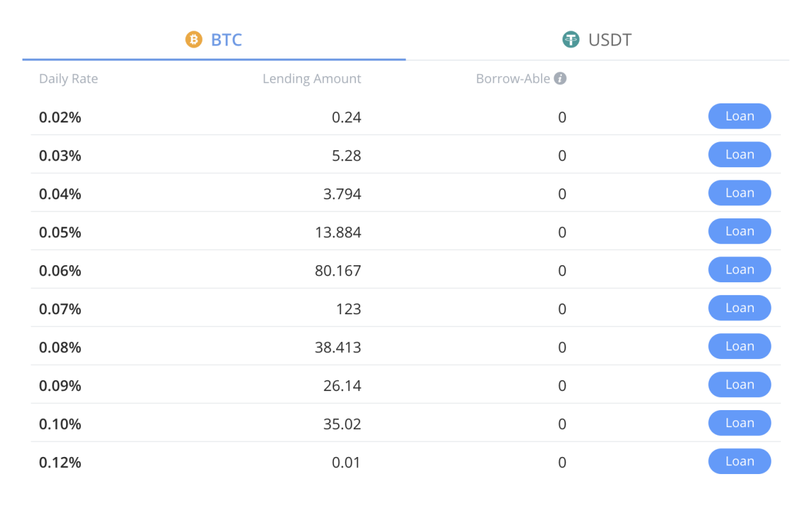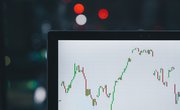Margin trading has seemed to become the catchphrase of this crypto winter.
The essence of leverage is that it’s just a loan. Users can borrow funds from a platform via margin trading that is several times the amount of their own assets so that they can profit on a bigger scale if the market moves in their direction. However, it is of course worth noting that while users amplify their transaction amounts and obtain higher returns, the risk also goes up in the same way – as they can lose money more easily.
Despite the high risks, many users with aggressive risk tolerance are willing to use leverage instruments, with hopes of using larger funds to achieve higher returns.
With the development of crypto margin trading, the concept of leverage has also been introduced into the digital asset market. Many exchanges have launched leveraged products, including Bibox, the first ever AI-enhanced encrypted digital asset exchange.
In April 2018, Bibox launched margin trading, providing users with up to 3 times leverage. In addition, Bibox has established margin accounts for users who are interested in margin trading so as to facilitate their management of margin funds.
Users who want to utilize “margin trading” can transfer funds as appropriate to their “margin accounts” at any time. The platform determines users’ loan amount based on the amount of funds that users have transferred into their margin accounts. Bibox exchange Co-Founder Aries Wang explains that “the main purpose of doing so is to isolate users’ margin accounts from their primary accounts so as to ensure the security of their funds.”
Margin trading on Bibox is essentially a peer-to-peer transaction. Lenders offer loans on the platform and set interest rates. Users who need loans can choose the appropriate “lender” according to their desired criteria.
Bibox serves as an information intermediary and borrowers and lenders are free to transact – the platform only charges a service fee and does not engage in lending and borrowing. All activities of borrowing and lending as well as interest rate setting involved in margin trading transactions are performed by users themselves.
Rate Setting
In terms of interest rate setting, Bibox, as an information intermediary, does not set interest rate limits for users, but gives an interest rate range: 0.01% to 0.1%, which means that the minimum rate of interest is 1/10,000 (the lowest of all exchanges). Lenders are free to set interest rates within this range. The time period for each loan on Bibox is 7 days. If a user finds that 7 days is too short, he or she can enable the “repay and renew” function, which means that after 7 days, the loan can be automatically renewed.

The advantage of this peer-to-peer model is that users can, based on their own borrowing needs, find the most cost-effective way of borrowing on the platform.
For example, say user A wants to borrow 3 BTC. On a platform with a fixed interest rate of 0.1%, the interest for one day may be 0.003BTC (3*0.1%=0.003BTC); on Bibox, the default is that the interest rate for lending starts with the lowest daily rate of 0.01%. In this case, the daily interest rate for user A on Bibox is 0.000876BTC (0.24*0.02%+2.76*0.03%=0.000876BTC).
As of now, margin trading on Bibox has reached a proportion of 100%, which means that anyone who borrows from this platform can get the loan he or she needs.
Risks of Trading
As we all know, the promise of high returns also comes with high risks. In order to reduce risks, all platforms aim to prevent the occurrence of margin call. Bibox, which prides itself on its safe trading, is no exception. In terms of risk control, Bibox has adopted a dual approach.
First of all, before margin trading starts, all users who want to engage in margin trading need to transfer funds to their margin accounts, which are separate from their primary accounts. None of users’ subsequent margin trading are performed via their primary accounts, which ensures that users’ primary accounts will never be susceptible to a closeout stemming from the use of leverage.
Secondly, in the process of margin trading, Bibox has adopted an early warning mechanism. When the amounts of users’ margin trading have shrunk to 110% of their borrowed amount, in order to ensure that borrowers’ assets are safe, borrowers’ assets will automatically be closed out by the system at the current highest price on the market. In addition, in order to ensure that the closeout price is objective and fair, the price index on Bibox is not merely based on the price index of Bibox alone, but based on the price information of CoinMarketCap, CoinCap, Binance, Bitfinex and Bibox, and a weighted index is thus calculated.
For instance, user A, whose margin account only has one BTC, wants to trade with leverage on Bibox, after using 3 times leverage, can borrow 2 BTC from the market. In the end, user A can use 3 BTC for asset allocation. Suppose that the interest on the loan is 0.1%, when user A’s assets has shrunk to 2.2BTC, a margin closeout will be made.
Finally in terms of risk control, Bibox has introduced the concept of “insurance”, the main purpose of which is to help users transfer and divert some of the risks. Users who have chosen this service need to give 10% of their interest on lending to the ad hoc investor protection fund set up by the platform. In case of the unfortunate event of a closeout, the platform will use the fund to compensate for users’ losses arising from the closeout.
For the time being, most major exchanges have incorporated leverage into contract transactions. Currently, Bibox has not launched an online contract transaction, but Aries Wang has said that Bibox will also launch a perpetual contract transaction in the near future.







